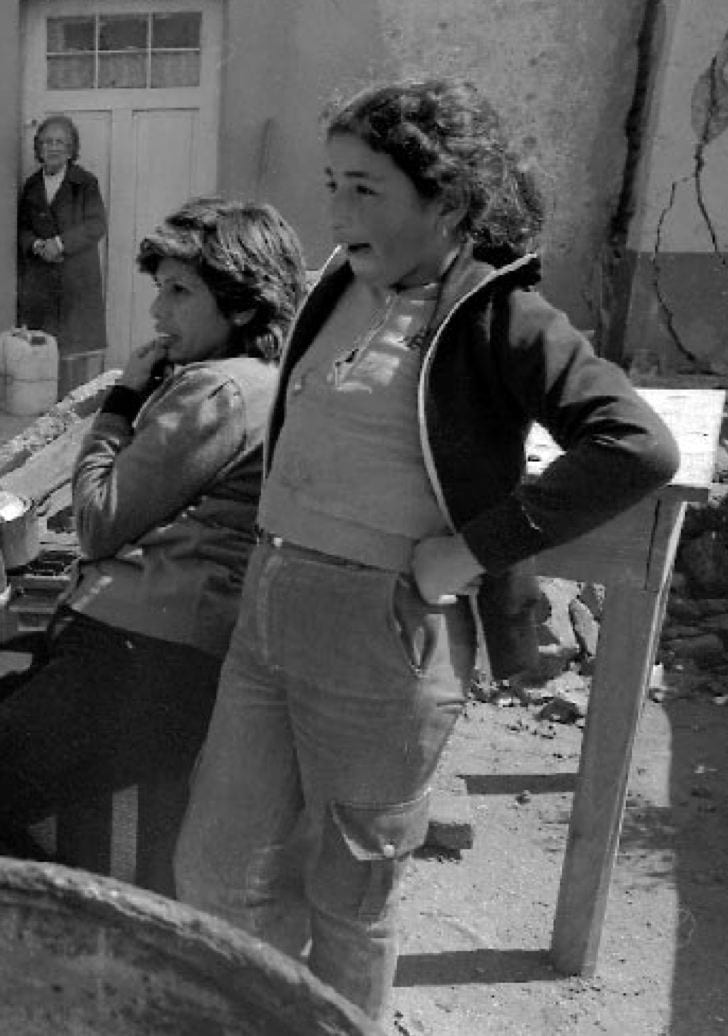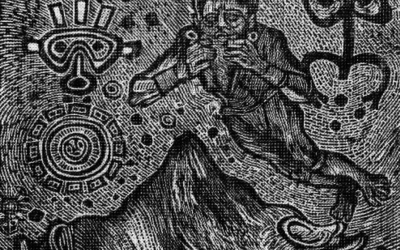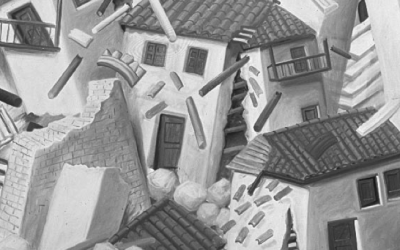In the Shadow of the Winds: Rethinking the Meaning of Hurricanes
I
The comparisons were inescapable in the aftermath of Katrina. New Orleans as the Third World:
displacement and destitution, internal migration and “refugees,” hunger and homelessness. That most of the people overtaken by these circumstances were conspicuously men, women, and children of color—and poor—served to make the comparisons all the more compelling. New Orleans in the wake of Katrina was profoundly reminiscent of the Caribbean condition.
The winds and the waves of the great storms bear down particularly hard on the poor of the Caribbean, whether they be men or women, white or black, young or old, the mass of humanity concentrated in the cities or the poor who toil in the countryside. For the displaced and the destitute, hardship only begets more hardship in the wake of a great storm. Families living close to or at the threshold of adversity have a far shorter distance to fall to succumb to indigence. They inhabit fragile dwellings, constructed with the simplest of building materials, often in the most vulnerable locations, and rarely possess sufficient resources for recovery. Living on the edge of penury, they may find themselves suddenly hurled over that edge by the winds and waves of a great storm.
Hurricanes haunt the Caribbean like a spectral menace. It has always been thus, and nowhere more so than in Cuba. Stretching 750 miles in length, the long axis of the island lies east and west parallel along the middle latitudes of the Western Hemisphere, extending lengthwise across the paths most frequently traversed by hurricanes exiting the Caribbean into the Gulf of Mexico and up the Atlantic. That Cuba was among the first nations to offer New Orleans assistance after Katrina was a gesture of support and sympathy borne of first-hand experience.
Almost everyone in Cuba has a memory of a hurricane—at least one—and always, it seems, one in particular: that initial encounter with terror, often at an impressionable age. But then, too, hurricanes have a way of making an impression at any age. No passage of time seems to dim the memory of the experience, or its effects: it is something that people remember clearly and recall frequently. The experience often persists thereafter as the reference point by which people make those profoundly personal distinctions about their lives as “before” and “after.” The experience makes for the memory of a lifetime. In time, it passes into history. With enough time, it becomes the stuff of folklore.
II
The word huracán appears to have entered the Spanish vernacular from indigenous usage. The Taíno Indians used huracánto mean malignant forces which took the form of winds of awesome intensity and destructive power; winds that blew from all four corners of the earth. The word was found in a variety of derivative forms, including hunrakán, yuracán, yerucán,and yorocán, among others, and appeared in use among the pre-Columbian peoples of Mexico, Central America, and the north coast of South America. All forms signified the name of a malevolent god, possessed of the capacity to inflict immense destruction. Among the Maya, hurakán was the name of one of the most powerful gods who, together with cabrakán(earthquake) and chirakán (volcano), constituted the three most powerful natural forces.
In the course of time, the phenomenon of the hurricane insinuated itself into the larger circumstances of the Cuban condition as a variable in the formation of nation. The idea of the hurricane insinuated itself deeply into Cuban sensibilities.The use of the words huracán and ciclón developed as a popular standard of measure of shared cultural experiences: the encodings by which the temperament of a people was revealed. Usage drew upon an imagery that implied scale and scope and evoked the vastness of the force. In his 1906 analysis of Cuban character, for example, writer M. Márquez Sterling condemned national intellectual traditions as “corrupted by a current of falsehood that makes us at times feel the anticipated sensation of an impending hurricane.” Journalist Sergio Carbó despaired in 1958 over the deepening civil war, the murders and the assassinations, the torture and terror, and could only describe the national crisis as a “cyclone of vengeance and death” (ciclón de venganza y muerte). Writer Luis Suardíaz described the tumultuous first three decades of the Cuban revolution as “treinta huracanados años.”
The proposition of hurricane offered a readily accessible metaphor, means of context and comparison, often as a frame of reference for a state of mind. Its invocation implied a measure of a mood, an accessible reference point possessed of a unique cultural resonance. “A Revolution is a force more powerful than Nature,” Fidel Castro would proclaim in October 1963, only days after the passing of Hurricane Flora. “Hurricanes and all those things are trivial (son una bobería) when compared to what a Revolution is.”
It is thus useful to conceive of environmental history within the framework of the national experience. In particular, it is useful to think of the ways that catastrophic storms have acted to shape Cuban socio-economic developments, thereby influencing political outcomes and shaping cultural practice. Hurricanes must be viewed as factors—sometimes decisive factors—which shape the options and outcomes to which vast numbers of people are obliged to respond and to which they are often required to reconcile themselves. Indeed, it was precisely at the conjuncture of response and reconciliation that some of the more notable facets of Cuban national development assumed definitive form. Hurricanes and their aftermaths loomed large in the sequence of events shaping social and economic developments in Cuba and were deeply implicated in the ways that the nation assumed form.
The study of hurricanes has traditionally been devoted to matters of human loss and material destruction. While these circumstances should not be minimized, it is perhaps just as important to study the ways that hurricanes have shaped strategies of economic development, influenced the organization of labor systems, and acted upon the social determinants of nationality. To study hurricanes is to obtain a new way to examine the circumstances by which people were bound together as a nation in the face of forces beyond their control—often, even beyond their capacity to conceive—in cooperative efforts of long-term recovery and the collective will to prevail.
Hurricanes must be examined in a real-life context: they occur at specific historical moments, in specific political environments, within specific economic contexts, and at specific stages of technological development. Always, hurricanes provide an occasion to reveal to a people who they really are, often causing them to place in question received wisdom, or to examine anew the assumptions by which daily life is lived. Sometimes, hurricanes reveal contradictions of such magnitude as to set in motion far-reaching political change.
Hurricanes inevitably pass, of course, and life returns to normal. But rarely is “normal” the way it used to be: not immediately, often not for years to come, sometimes not ever. Circumstances of adversity have often caused social consensus and sentimental associations—so central to the emerging notion of nation—to obtain a special type of resonance. The hurricanes that inflicted recurring devastation on all parts of Cuba were experiences shared as a nation-wide phenomenon. In particular, nineteenth-century hurricanes—striking amid the larger landscape of demographic developments and political disquiet—contributed in important ways to shaping the community solidarities that cumulatively gave expression to the shared experiences of nation.
Care for the homeless and the hungry, the displaced and the injured, was borne by friends and family. Responses to the disruptions of daily life were addressed collectively, through kinship systems interacting within larger community networks. Certainly, those practices were already in place before the disarray occasioned by the hurricanes, but they assumed a new prominence and indeed a new purpose under the circumstances. In the process, they gave form to new contingent relationships by which communities recovered and acquired a truer sense of themselves.
III
In Cuba, then, the hurricane has transformed into a shared social experience, at once a source of community solidarity and the means by which shared elements of the past are forged: the hardship of adversity, to be sure, but also an occasion to celebrate collective triumph. People who previously may have had little contact with one another were thrown together in a common endeavor of survival and recovery, thereby establishing the precedents for collective action, independent of established formal organizations. Indeed, at least as important as the structural readjustments occasioned by hurricanes, and certainly as long lasting, were the social transformations concurrent with and derived from the disarray associated with the storms. The idea of a national community in Cuba did not originate wholly out of abstract notions and sentimental attachments. Much was forged out of actual experiences, those occasions in which common experiences passed into elements of a familiar shared history: the stuff of memory of the past, as a source for the future. The observations made in another context by sociologist Russell Dynes relating to the social consequences of disasters have relevance to the Cuban experience with hurricanes. Dynes suggests that disasters contribute in important ways to the forging of community solidarities, whereby the “consequence of a disaster event . . . is in the direction of the creation of community, not its disorganization, because . . . a consensus on the priority of values within a community emerges; a set of norms which encourages and reinforces community members to act in an altruistic fashion develops.” He adds: “For those living close together, facing a common problem may bring about the development of organization. The result of struggling with a common problem which stimulates joint action may actually result in a locality’s becoming more closely knit than it was before.”
These circumstances contributed to the development of behaviors and attitudes that acted to redefine and expand the realm of public responsibility and enlarge the collective stake in the community. The attending emphasis on collaborative behavior and common action assumed form in the context of the hurricane, by which hierarchies of values were arranged to meet the requirements of individual well-being and collective recovery within the larger setting of community needs. “Some people have compared disasters to a drama which grips people’s imaginations,” Dynes astutely observes, “heighten[ing] the sense of importance of human action, and facilitate[ing] emotion identification.”
The larger implications of hurricanes in Cuba thus stand in sharp relief. The recurring and frequent experience of common hardships and shared adversity served to contribute to the memories by which the meaning of community assumed accessible form, the terms by which local triumphs and tragedies provided an all-encompassing narrative of a shared past as a source of binding affinities. This was a recurring experience, to be sure. But it was not only a matter of a common past, for it implied too a future in which all were inextricably bound. Hurricanes would surely come again, and once again the community would be threatened, thus obliging all members to join together again for the common good.
Winter 2007, Volume VI, Number 2
Louis A. Pérez, Jr. teaches in the Department of History at the University of North Carolina at Chapel Hill.
Related Articles
Editor’s Letter: Natural Disasters
We were little black cats with white whiskers and long tails. One musical number from my one and only dance performance—in the fifth grade—has always stuck in my head. It was called “Hernando’s Hideaway,” a rhythm I was told was a tango from a faraway place called Argentina.
After the Earthquake: Juan’s Life
Juan was a construction helper. He lived in Armenia, but his parents were from the Antioquia region, who had fled because of the violence there. The mother of his children was called…
Political Memory
Late in 1717 Dr. Joseph Surin, precentor of the Cathedral of Old Guatemala, carried out some calculations: had the mudslide that wiped the city on the 28th of August, feast day of Saint…





